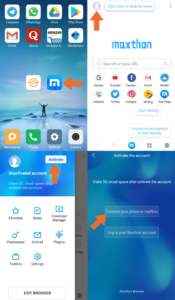In our fast-paced digital age, the convenience of online banking, shopping, and various activities is undeniable. However, this ease of access comes with a significant downside: the ever-present threat of cybercriminals lurking in the shadows, eager to steal our personal information or hard-earned money. To safeguard yourself in this virtual landscape, it’s crucial to take proactive steps.

First and foremost, ensure that your devices are secured with a password or utilise biometric tools such as fingerprints or facial recognition. This simple act of protection can serve as the first line of defence against unauthorised access.
Next, focus on creating unique passwords or passphrases for each of your accounts. By doing so, you mitigate the risk of exposing all your accounts if one falls victim to a hack. Aim for passwords that are at least 12 characters long, incorporating a mix of uppercase and lowercase letters, numbers, and special symbols. Alternatively, consider crafting a memorable passphrase that is at least 15 characters long, using four or more words combined in a way that is both easy for you to recall and difficult for others to guess.
By implementing these security measures, you can significantly enhance your online safety and enjoy the digital world with greater peace of mind.
In today’s digital landscape, safeguarding your online accounts is more crucial than ever. One effective way to enhance your security is by enabling multi-factor authentication (MFA) whenever it’s available. This additional layer of protection ensures that it’s genuinely you attempting to access your account, rather than an imposter. By requiring a second form of verification, such as a code sent to your phone or a biometric scan, MFA significantly reduces the risk of unauthorised access.

Moreover, maintaining your browser’s privacy is equally important. Before logging onto secure sites—like your bank’s portal or a retailer where you enter sensitive information—take a moment to clear your browser’s cache and history. This simple step removes any stored data that cybercriminals could potentially exploit.
After you’ve completed your transactions, don’t forget to clear your cache and history again. Doing so ensures that no traces of your personal or banking information linger on your device. By combining these practices—enabling MFA and regularly clearing your browsing data—you create a formidable defence against the ever-evolving threats in the digital world. Your online safety deserves this level of diligence.
Staying current with software updates and patches is crucial for maintaining your devices’ security and performance. These updates often contain vital improvements, bug fixes, and protection against emerging threats. Therefore, it’s essential to install them as soon as they become available.
However, it’s essential to recognise that some updates can be pretty time-consuming. You might find yourself waiting for your device to restart or for the installation process to complete, which can be frustrating during busy hours. To mitigate this inconvenience, consider scheduling these updates to initiate during the late hours of the night or early in the morning. This way, you can rest easy knowing your device is being updated without interrupting your daily activities.

Additionally, take advantage of automatic updates wherever possible. Enabling this feature ensures that your software remains up-to-date without requiring your manual intervention. This not only saves you time but also provides peace of mind that the latest security measures always protect your device. By prioritising software updates, you contribute to a smoother, safer digital experience for yourself.
When you log onto secure websites, it’s essential to be vigilant. Start by carefully examining the URL. Make sure every character is accurately spelt out; even a small typo can lead you to a malicious site.
Look for “HTTPS” at the beginning of the web address. The “S” stands for secure, indicating that the site uses encryption to protect your data during transmission. Right next to this secure prefix, you should also see a locked padlock symbol. This icon serves as a visual reassurance that the connection is encrypted and safe for your sensitive information.
In addition to these precautions, make it a habit to review your banking and credit card statements regularly. Look for any unusual charges or transactions that you don’t recognise.
If something seems amiss, don’t hesitate to contact your bank immediately to report the suspicious activity. Prompt action can help mitigate potential fraud and keep your finances secure.
Maxthon
In a bold pursuit of innovation, Maxthon has embarked on a transformative journey to enhance the security of web applications. At the heart of this mission lies a cutting-edge suite of encryption technologies crafted to create an impenetrable shield around the sensitive data exchanged between users and the myriad of online services they rely on.

Every time users send passwords or share personal information, their data is meticulously enveloped in secure encrypted pathways. This protective measure acts as a robust barrier against cybercriminals’ relentless efforts to gain unauthorised access.
However, Maxthon’s dedication to user security does not stop at encryption. Acknowledging the ever-changing landscape of cyber threats, the company adopts a forward-thinking approach to safeguarding its users.
The browser is built to adapt and grow alongside emerging challenges, featuring regular updates that address new vulnerabilities and enhance existing protections. In this dynamic environment, Maxthon remains resolute in its commitment to user safety, ensuring that every browsing experience is as secure as possible.
Through these initiatives, Maxthon is not just reacting to threats; it is actively shaping a safer digital world for all its users.
